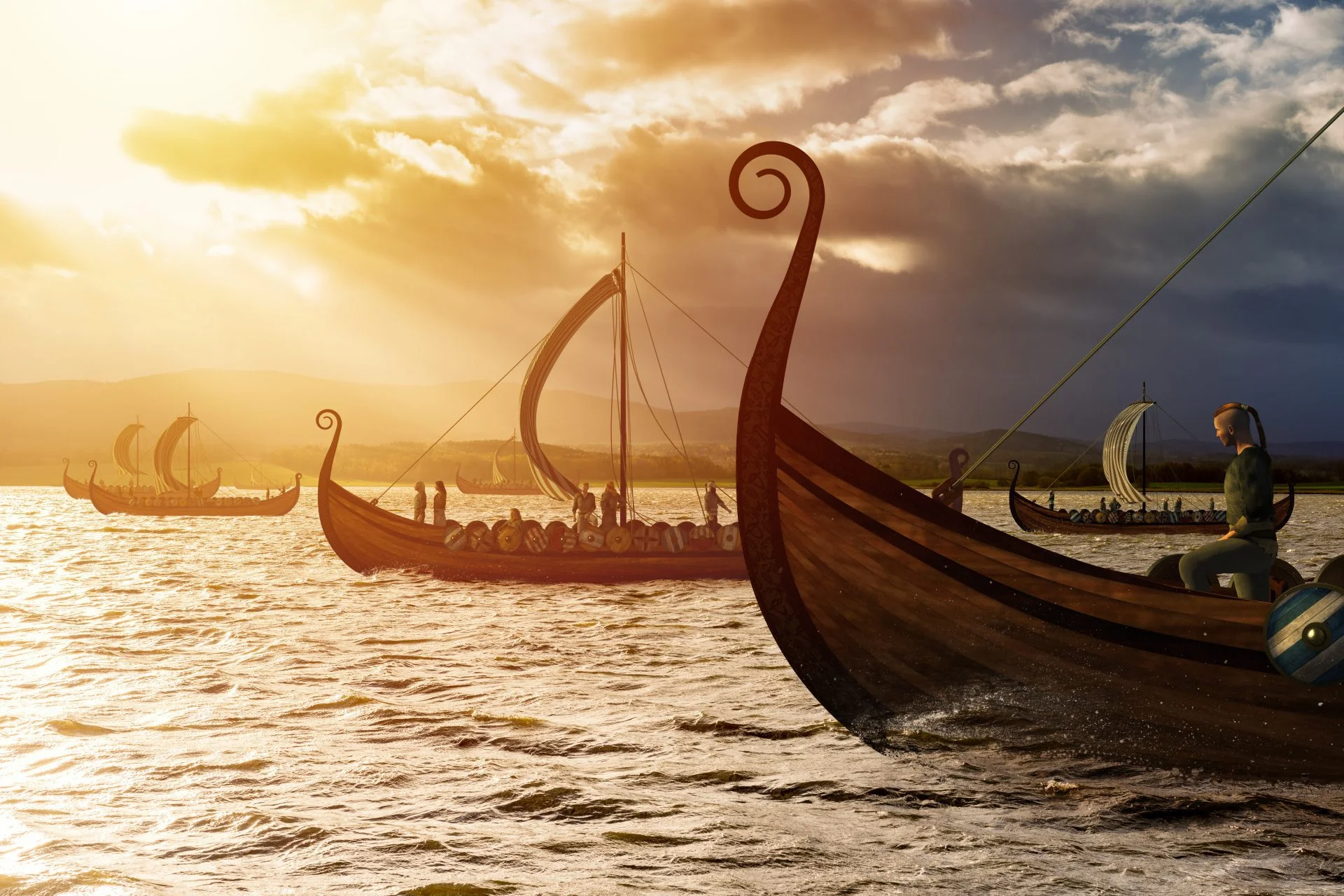Throughout the Middle Ages, a movement led by Norse explorers, traders and warriors from Scandinavia (present-day Denmark, Norway and Sweden), led to the exploration of distant lands in pursuit of wealth and colonisation.
These explorers, traversed the coastline of Europe, settled across the British Isles, Iceland, Greenland, and as far west as Vinland (Canada) in the Americas.
They travelled inland by river across Ukraine and Russia, where they founded the Kievan Rus’ kingdom. Venturing south into the Caspian and Black Sea, they even reached the walls of Constantinople, the capital of the Byzantine Empire.
One area of Viking expansion often overlooked, is the interactions they played with the coastline of Africa.
The “Book of Roads and Kingdoms”, an eleventh-century geography text by Abu Abdullah al-Bakri, describes the Vikings as “Majus”, a term for heathens and fire-worshipers.
Historical text is fragmented and open to suspicion, but according to some sources, in AD 859, a large Viking fleet began raiding kingdoms on the Iberian Peninsula and across the Mediterranean. They attacked the Kingdom of Asturias, the Emirate of Córdoba, and the Umayyad Caliphate at Orihuela, the Balearic Islands and Roussillon.
The fleet, led by Hastein, a notable Viking chieftain of the late 9th century, and his protégée, Björn Ironside, son of the Viking king, Ragnar Lodbrok, then turned their attention south to the Emirate of Nekor on the African coast.
They landed in Mauretania, present-day Morroco, and moved on the city of Nekor, now partially submerged by the reservoir of the Abdelkrim Khattabi dam. At the time, Nekor was described as one of the greatest centres of Arabic culture in the region of Rif.
The city was defended by Sa’id II ibn Salih, but fell to the raiding Vikings and was sacked over a period of eight days. According to some texts, many of the city inhabitants were taken as slaves, while other accounts claim that Hastein purchased ‘blámenn’, blue men, possibly Soussians or Tuaregs to be sold in the Irish slave markets.
The raid on Nekor is mentioned by Abdullah al-Bakri (based on earlier text), where he describes: “Majūs – God curse them – landed at Nakūr in the year 244 (858–859). They took the city, plundered it, and made its inhabitants slaves, except those who saved themselves by flight. Among their prisoners were Ama al-Raḥmān and Khanūla, daughters of Wakif ibn-Mu’tasim ibn-Ṣāliḥ. Muḥammed ransomed them. The Majūs stayed eight days in Nakūr.”
The same basic tale is recorded by a number of other writers, including the 10th century Andalusi historian Ibn al-Qūṭīya, and the later authors Ibn Idhārī and Ibn Khaldūn, and a version also appears in the late ninth-century Christian Chronicle of Alfonso III.
Archaeologists are yet to find any physical evidence to support the Viking raid on Nekor, however, skeletal remains of rodents (house-mice) on Madeira (not far from Morocco by sea), suggests that the mice may have been transported on a Viking vessel and colonised the island between AD 903–1036.
Published in the journal, Proceedings of the Royal Society B, the paper also shows that the mice share similarities in mitochondrial DNA with Scandinavia and northern Germany, but not with mice found in Portugal.
Centuries later, between AD 1146–48, the Normans, a people arising in the medieval Duchy of Normandy from the intermingling between Norse Viking settlers and indigenous West Franks and Gallo-Romans, established the Kingdom of Africa.
The Kingdom was an extension of the frontier zone of the Siculo-Norman state, covering Tunisia and parts of Algeria and Libya. The local aristocracy was largely left in place, and Muslim princes controlled the civil government under Sicilian oversight. Norman rule was fleeting however, as during the reign of William I, the Kingdom of Africa fell to the Almohad Caliphate between 1158–1160.
Header Image Credit : Shutterstock





